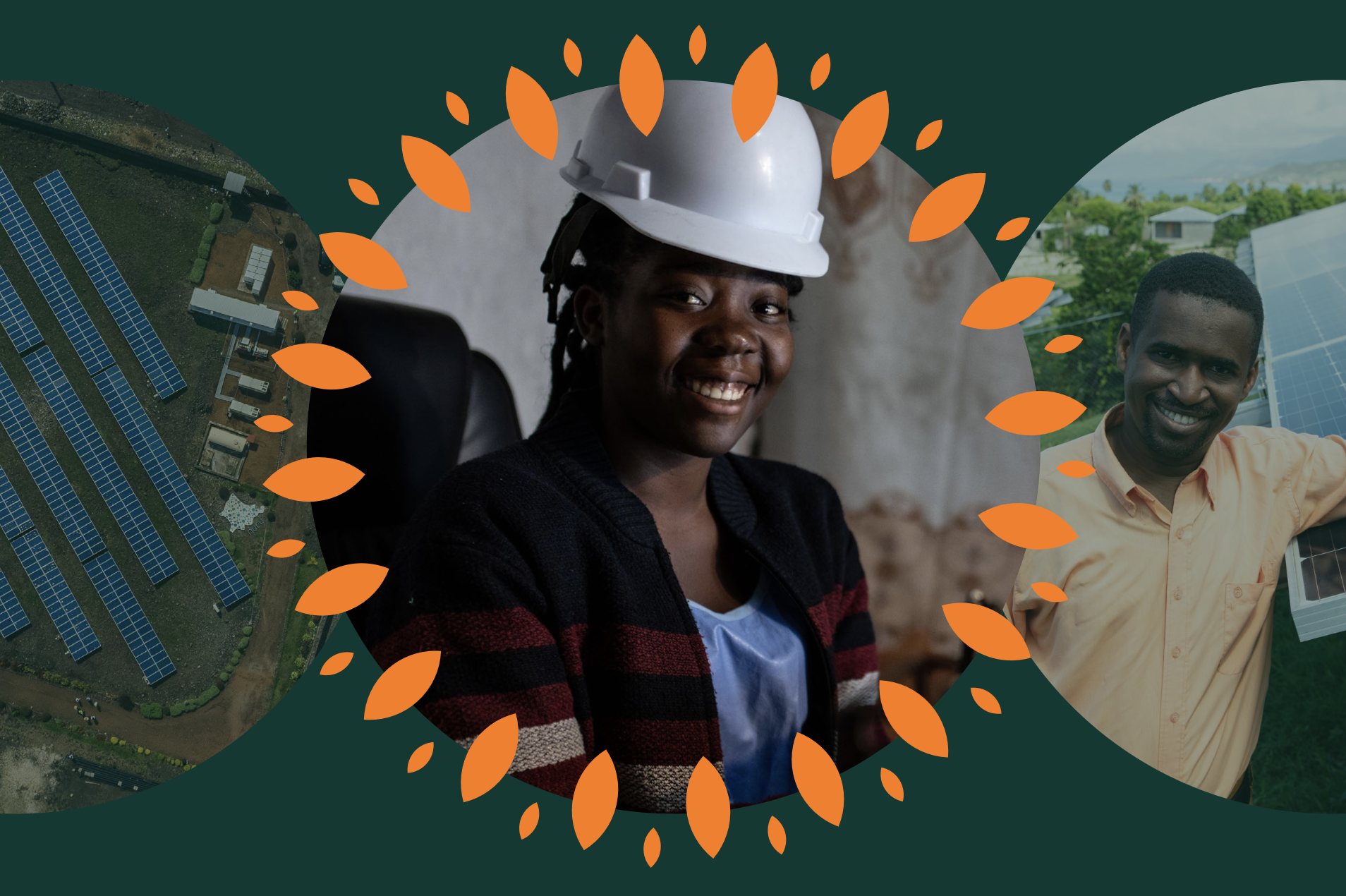
Rural Electrification: Are Mesh Grids a Game Changer?
Of the nearly 10 million people without access to electricity in Latin America and Caribbean, over 60% are in Haiti. This lack of access to affordable and reliable power has hindered the island’s development, affecting communities and businesses, and limiting the nation’s ability to weather worsening climate events.
Until recently there were two options for rural electrification in areas not reached by the grid: mini-grids and solar home systems. But both come with their challenges.
While solar home systems are flexible, fast, and simple to install, with the ability to provide adequate power for basic household needs such as lighting and phone charging, they do not provide enough energy or power for productive use – which is key for long term sustainability.
Mini-grids on the other hand can supply large amounts of power, but for rural areas where average household consumption is less than 5kWh/month, they are expensive and require subsidies of around $1,000 per connection to make them financially viable. Additionally, the World Bank estimates that annual mini-grid installations need to increase by 40 times in order to meet 2030 electrification goals, but high capital grant requirements often inhibit them from scaling up.
A number of trends have transformed the landscape for off-grid technology in the last decade including:
- An unprecedented improvement in the efficiency of lighting, and appliances in the last ten years, with the power needed for a household to have lighting, phone changing, fans and a TV having been reduced from 50 kWh per month to 5 kWh per month
- A more than 80% reduction in solar panel and battery prices over the last ten years
- Sophisticated software that allows multiple power sources to be linked
- Internet of things (IoT) software that monitors and detects faults remotely
These advances have allowed mesh grids to emerge as a technological alternative with the potential to overcome the barriers solar home systems and mini-grids face.
Engineers have designed solar PV-based mesh grids which co-locate generation of electricity with the user. With mesh grids, households predominantly produce the electricity that they use from panels on their roof. To get the backup that a grid provides, households are linked with a 50V DC grid allowing generation and use to be shared among nearby households. The household systems are designed to be modular and ‘plug and play,’ which allows for economies of scale in manufacture and for the grid to be easily reconfigured if demand changes. With both DC and AC provided, higher efficiency DC equipment can be used wherever possible. Mesh grids combine the simplicity and ease of use of solar home systems, with the resilience of a grid, and the long-term customer service of a utility.
By eliminating centralised generation, the need to distribute all the power through overhead lines diminishes, lowering the cost. This is especially critical if lines are blown down by a hurricane or disrupted by an earthquake, mesh grids allow for local generation and power supply to continue. The initial pilot installed by Alina Eneji in the Marchand Dessalines area of Haiti indicates that at scale, a mesh grid can be financially sustainable with a grant to developers of $350/household, a savings of at least $500 on a conventional mini-grids.
Alina Eneji’s mesh grid is using technology from Okra Solar, an Australian company that is supplying technology to grid developers in Cambodia, Nigeria and the Philippines, which Alina Eneji configures for the Haiti market.
The Global Energy Alliance for People and Planet (GEAPP) recognises the need for technological innovation to accelerate efficient and cost-effective rural electrification. That is why GEAPP is supporting Alina Eneji to test a mesh grid at scale in the Marchand Dessalines area of Haiti, a rural area where demand is low and there are few large users of power.
Targets

Number of pilot households & businesses

People served after GEAPP intervention

Expected monthly supply to individuals
Alina Eneji’s ambition is to scale energy access across Haiti in those areas where it is uneconomic to extend the main grid, working with local communities, the government and ANARSE, the Haitian energy regulator. GEAPP is supporting the work with its institutional partners and the government to help accelerate electrification more broadly.
In the current pilot of 1,000 households, Alina Eneji is testing a ‘lease to own’ model for productive equipment, which is enabling 15% of the current customers to buy appliances. GEAPP has also connected Alina Eneji with Fonkoze Foundation, a local microfinance company, who GEAPP is already working with to enable more productive use appliances to be offered by combining credit, business training, and aftersales service.
Driko Ducasse, Executive at Alina Eneji, wanted to help his fellow Haitians who were going through challenging times. He saw that Haiti, as with many emerging markets, has local grids that were put in place, often with donor funding, but were unable to generate enough cash to ensure their long-term viability. He wanted a model that could scale to meet the needs of the approximately one million households that lack any electric power or lack affordable, reliable power, and that were a viable solution for households needing only 5 kWh/month. Driko tested the initial mesh-grid small-scale pilot, with partial funding by the Off Grid Electricity Fund, a Haitian fund capitalized by the World Bank.
GEAPP saw the potential in mesh grids in Haiti following the initial pilot and is collaborating with Alina Eneji to expand to 4,000 connections, serving 18,000 people on the island. If the results in the pilot confirm it can be scaled up, this will present a much faster more cost-effective way to provide electricity in the country. Haiti could be at the leading edge of the grid of the future.
“At GEAPP, we aim to enable the development of companies and entrepreneurs with new and promising business models – especially those at an early stage that DFIs might deem high-risk. GEAPP provides funding in this critical stage, where a larger scale demonstration is needed to prove the model and attract additional investment. The initial pilot results from Alina Eneji have been promising, and there is great potential to transform our thinking on rural electrification, demonstrating that mesh grids can be not only be a lower cost solution than conventional mini-grids, but faster to implement, more resilient, and better at meeting the needs of the rural populations in Haiti and beyond.” Simon Harford, CEO, GEAPP
The time is now for Haiti’s renewable energy transition, and mesh grids could be the answer. By working together, Haiti can be a leader in demonstrating how clean energy technology innovations can transform low-income, energy-poor communities around the world.





